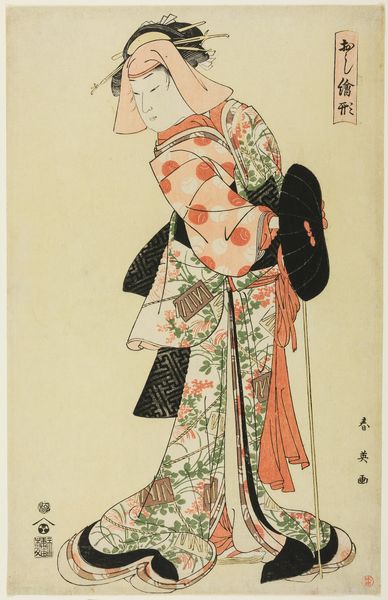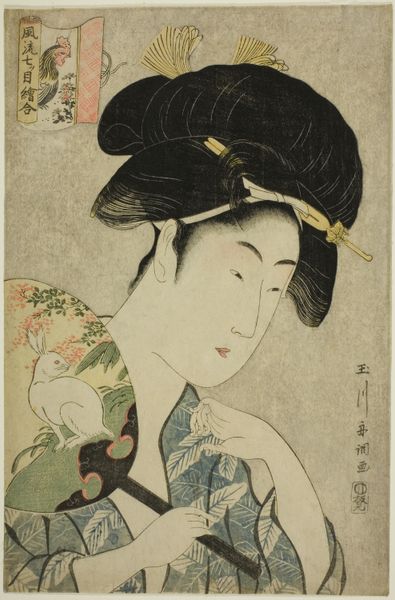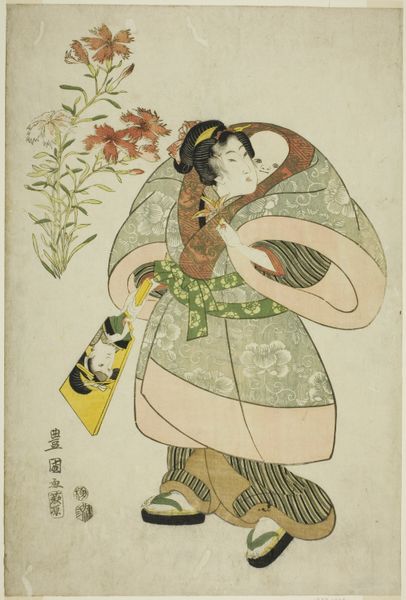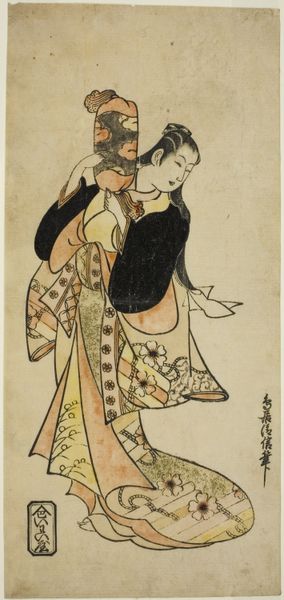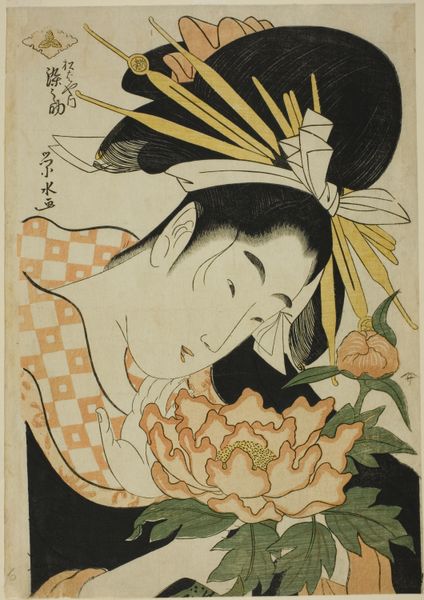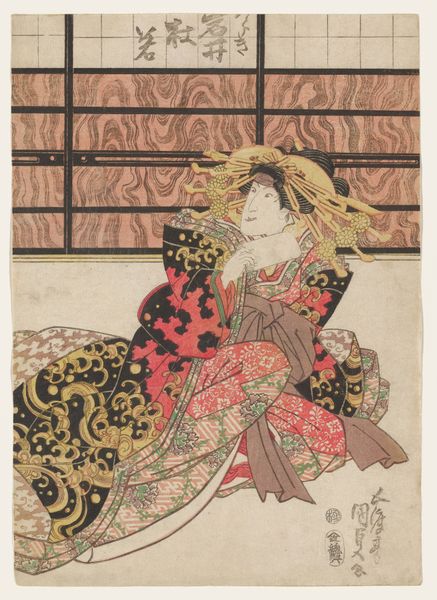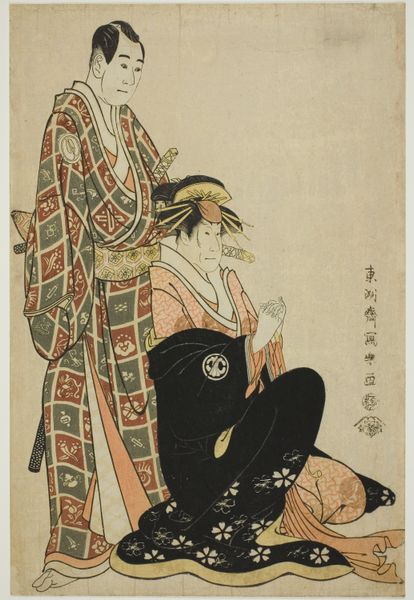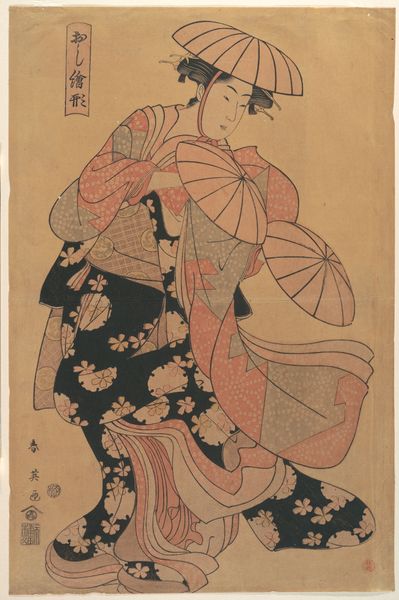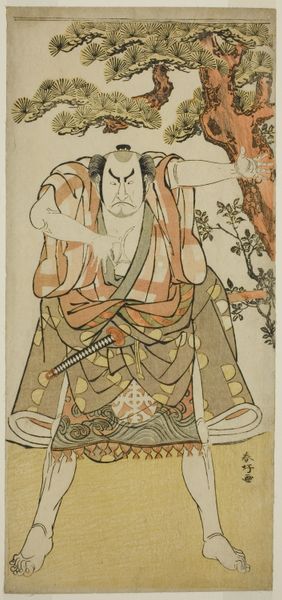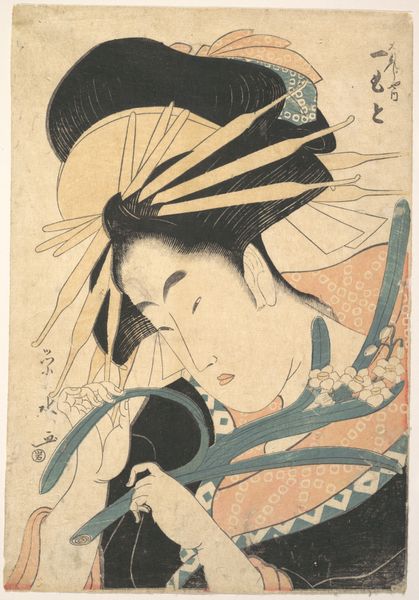
Boy as Jurojin, from an untitled series of children as the Seven Gods of Good Fortune c. 1780s
0:00
0:00
print, woodcut
#
portrait
#
narrative-art
# print
#
asian-art
#
ukiyo-e
#
figuration
#
woodcut
Dimensions: 15 1/2 × 10 1/8 in.
Copyright: Public Domain
Kitao Shigemasa created this woodblock print, Boy as Jurojin, in eighteenth-century Japan. Here, we see a child masquerading as Jurojin, one of Japan's Seven Gods of Good Fortune, who is traditionally represented with a deer. The print’s meaning arises from the way it plays with cultural references and associations. Jurojin is the god of longevity, often depicted with a white beard and a scroll, embodying wisdom. Shigemasa replaces the deer with a turtle, another symbol of long life. The prints may have been commissioned to celebrate the New Year or the birth of a child, seeking blessings of health, happiness and long life. Woodblock prints were not only a popular art form but also a significant cultural industry. They were produced and distributed on a mass scale to an increasingly literate and prosperous urban population. A deeper understanding of the social conditions that gave rise to this work would require research into the publishing industry, popular culture, and the religious beliefs of the Edo period. Through such resources, we can better understand the significance of this work.
Comments
No comments
Be the first to comment and join the conversation on the ultimate creative platform.
